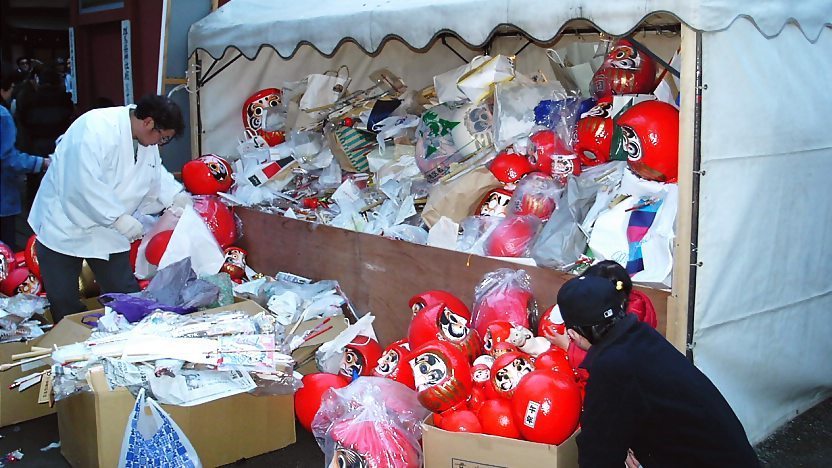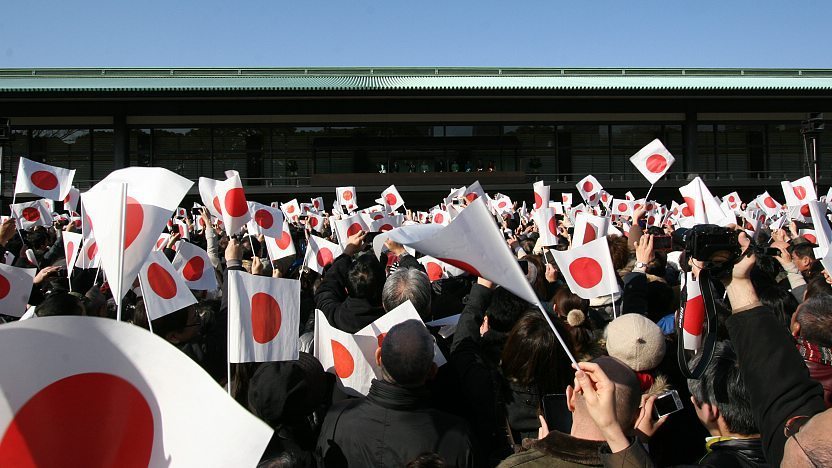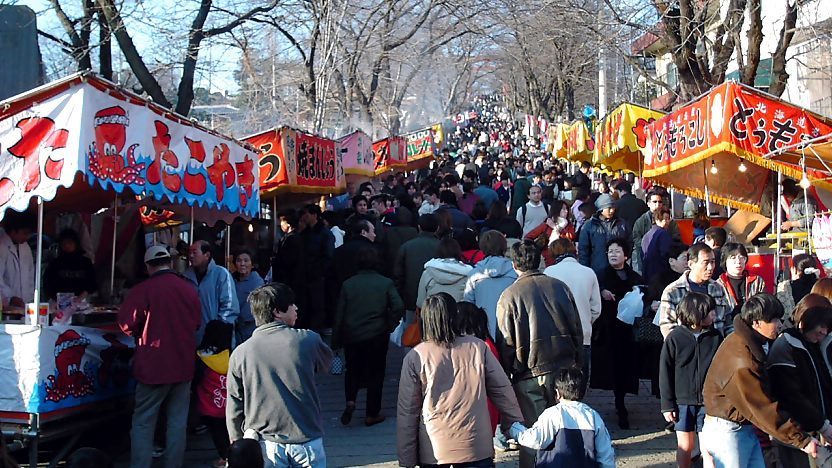Visiting Japan during New Year (shogatsu) can be rewarding, as you have the opportunity to experience Japan’s most important holiday, but it can also be frustrating, as many tourist attractions, shops and restaurants are closed, and getting around can be inconvenient.
New Year’s Eve
Traditional activities on New Year’s Eve include watching the popular music program “Kohaku Uta Gassen” on television and visiting a shrine or temple around midnight. In recent decades, countdown parties have become more numerous in the large cities, but fireworks at the turn of the year remain uncommon.
Hatsumode
If you are in Japan during New Year, you can join the crowds doing hatsumode, the year’s first visit to a shrine or temple. Hatsumode festivities are held at practically every shrine and temple across Japan during the first few days of the year, especially on January 1.
At popular shrines and temples you can experience a festive atmosphere with food stands and many people lining up for a prayer at the main hall, purchasing lucky charms for a fortunate new year and disposing their lucky charms of the past year. Most atmospheric is a visit to a temple around midnight on New Year’s eve, when the temple’s bell is rung repeatedly.
Some of the most popular shrines and temples, such as Tokyo’s Meiji Shrine, Kyoto’s Fushimi Inari Taisha, Osaka’s Sumiyoshi Taisha and Kamakura’s Tsuruoka Hachimangu each attract more than a million visitors over the first few days of the new year. Expect to line up for more than an hour at popular hatsumode sites in order to reach the offering hall for a prayer.
In order to accommodate the hatsumode activity, major urban train lines and lines serving popular shrines and temples, such as the Ise Shrines and Naritasan Temple, run late into the night or through the night from December 31 to January 1, although many rail companies have stopped or reduced this services since the coronavirus pandemic.

Emperor’s New Year greeting
On January 2, the Emperor makes several public appearances at the Tokyo Imperial Palace. It is one of only two occasions during the year, when the inner grounds of the palace are opened to the public (the other is the Emperor’s birthday on February 23).
The Emperor and his family are scheduled to appear on a glass protected balcony around 10:10, 11:00, 11:50, 13:30 and 14:20, waving and shortly speaking to the flag waving crowd. However, the event was cancelled in 2024 due to the Noto Peninsula Earthquake.

Increased travel activity
Domestic and international travel activity is intense during the New Year holidays, as many people visit their families on the countryside or undertake domestic or overseas trips.
Travel activity is particularly intense from December 29 to December 31 when many urbanites leave the big cities (especially Tokyo) and from January 2 to January 4 when they return home. As a result, trains, airports and expressways get very congested.
In 2024/2025, the travel peak is expected to take place between December 28 and 31 (especially December 28-29) with people leaving the big cities, and between January 2 and 5 (especially January 4-5) in the opposite direction.
Closures
Many tourist attractions, stores, restaurants, banks and ATMs are closed on one or more days between December 29 and January 4, limiting your sightseeing, shopping and dining choices, especially on January 1.
Museums are typically closed for multiple days over the holiday season. No nationwide pattern can be recognized for gardens and castles, some of which close on multiple days, others on a single day and others not at all. Temples and shrines naturally do not close over New Year.
Shops typically close on January 1, but are open on all other days around New Year. A small number of shops remain open even on January 1, especially in a few modern shopping districts and malls of larger cities.
Restaurants typically close on one or more days over the holidays, especially January 1. Many fast food chains, hotel restaurants, as well as the restaurants in the above mentioned modern shopping districts and malls, also open on January 1.
Below is a list of selected tourist spots, indicating closure days (colored red).
New Year 2023/2024
|

